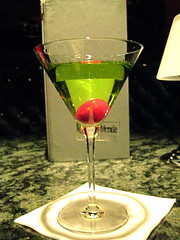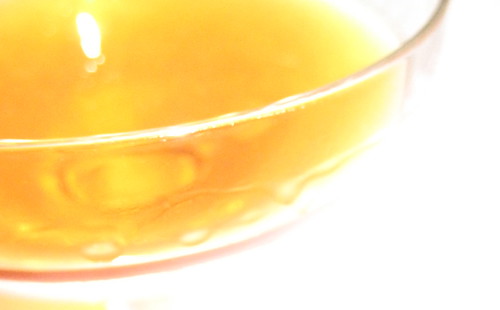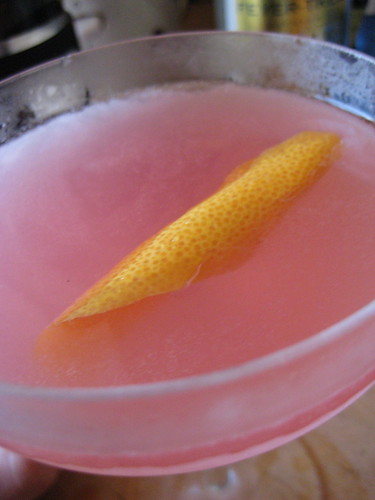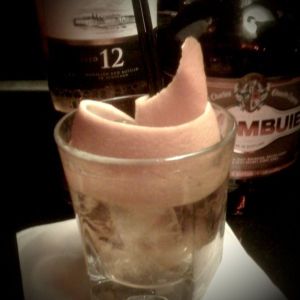Five: Tokyo Blossom
There are some products that get a hard time from bartenders. Whenever they're mentioned in conversation, we wrinkle our noses and shake our heads for whatever reason, if we've given it enough thought to come up with a reason. Take - for example - Midori. The fact that it was launched in Studio 54 at the Saturday Night Fever wrap party in 1978 has left the liqueur with a cheesy disco tag it may never shake off, and its popularity among young girls with a sweet tooth and drinkers of the saccharine, unbalanced, fruit concoctions the 80's were famed for are not helping its reputation with old-school cocktail revivalists. Midori does a couple of things very well. It brings an instant hit of fruit to a drink, along with a stand-out colour and a good degree of sweetness. These can all be helpful characteristics, so long as they're not allowed to overpower the whole drink. It might have an image problem, but Midori can be a useful ingredient when it comes to start thinking about summer cocktails.

Tokyo Blossom
30ml Absolut Citron
15ml Midori
5ml Kwai Feh lychee liqueur
30ml White Grape juice
Stir all ingredients with ice. Snap an orange zest over the top, but don't drop it in. Garnish with a cherry.






